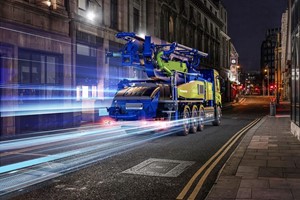Artificial Intelligence (AI) is set to significantly advance the integration of Building Information Modeling (BIM) and Digital Twin technologies, fostering greater synergy and enhancing the development of content and interactivity within the construction industry.
Amidst current economic uncertainties—including reduced project opportunities, tight budgets, and labor shortages—the construction sector faces pressing challenges. To address these issues, it is imperative for the industry to adopt more prudent and efficient digital management strategies. BIM, as the foundational digital asset for buildings, plays a central role in this transformation.
Historically, the adoption and utilization of BIM have been impeded by hesitancy and complexity. However, increasing resource constraints and efficiency pressures necessitate more precise control over construction processes. Observations from global markets indicate that regions such as Singapore and Japan are making notable progress in digital transformation within the construction sector. For example, Singapore's Building and Construction Authority (BCA) has introduced the Green Mark certification, while China is actively promoting new quality productive forces within the construction sector.
Enriching BIM Application with Digital Twins
BIM currently plays a crucial role in the design and construction phases of a building’s lifecycle, encompassing digital production, measurement and valuation, and simulation. Nevertheless, its extensive data, traditional software complexity, and accessibility issues present challenges for frontline workers. These workers require user-friendly, intuitive tools that support real-time simulation and validation on-site, which can enhance execution efficiency and reduce errors. Exploring methods to make BIM more accessible and practical for frontline employees is essential.
As buildings transition into their operational and maintenance phases—which can span decades—there is a need for comprehensive data integration beyond BIM. This includes integrating sensor data, equipment parameters, and other complex management systems. Digital Twin technology emerges as transformative in this context, extending BIM data to operational workflows seamlessly. By integrating digital twin-enabled BIM with cross-platform tools, including XR capabilities, operational tasks can be augmented, efficiency can be enhanced, and collaboration can be improved, leading to a superior digital experience.
Building the Metaverse of the Construction Industry
The integration of BIM and Digital Twin technologies extends beyond construction into the realms of maintenance and operations. This integration optimizes efficiency and digital management practices over extended periods. Simply relying on BIM data is insufficient for managing complex operational activities. Innovatively integrating technologies into BIM data, such as digital twin capabilities, is crucial for executing complex operations.
Digital twins serve as the foundation for the construction industry’s building metaverse. They enable various applications to evolve, supporting work and life from multiple perspectives. Establishing digital twins creates the cornerstone for a building metaverse. To fully realize this vision, a suite of creation tools is necessary to build logical and operational frameworks within the digital twin environment, making it as functional as the real world.
To support the actual tasks of frontline workers, a range of business-oriented clients must access the digital twin world. Given the complexity of frontline work, these applications should be accessible across platforms. XR devices, particularly with recent advancements like the Apple Vision Pro, offer promising capabilities. They can project virtual images 1:1 in the real world, enhancing intuitive understanding and reducing comprehension difficulties, while also allowing workers to perform tasks hands-free.
Driving BIM and Digital Twin Application
As digital twin technology evolves, industry professionals must collaborate to develop scenario-focused digital twin platforms tailored to specific business needs. Using these platforms as digital hubs enables seamless connections with upstream and downstream partners, providing customized solutions that align with actual customer demands.
Mainstream digital twin platforms naturally integrate with XR and spatial computing, facilitating quick deployment and rich functionality for mixed reality experiences in construction supervision and design optimization. The synergy of BIM and digital twins enhances these capabilities.
Furthermore, AI is poised to further advance the integration of BIM and digital twins, accelerating their synergy and fostering the development of content and interactivity. AI-driven virtual assistants have the potential to enhance efficiency in BIM and digital twin environments, driving transformative innovations in construction digitalization. By leveraging enterprise-grade AI-generated content (AIGC) tools, the industry can achieve significant advancements in digital application development, BIM data optimization, communication and collaboration, and building-related content generation.
Ultimately, technological advancement aims to enhance human efficiency. While we leverage these technologies, it is crucial to focus on creating applications that offer tangible benefits to frontline workers rather than merely providing superficial visualizations. This remains our central focus.
By Wu Hao













